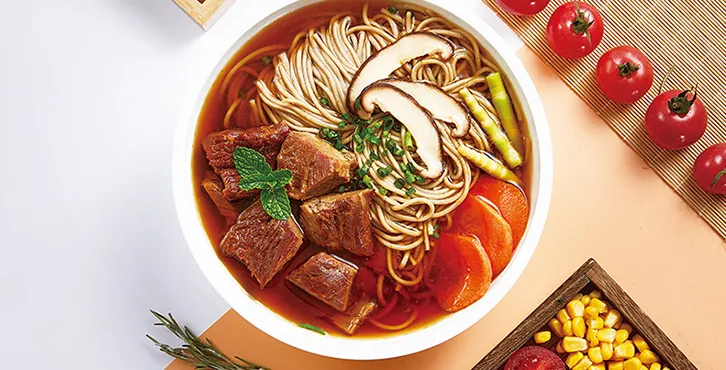types of naengmyeon
Exploring the Types of Naengmyeon A Refreshing Korean Delight
Naengmyeon, a beloved Korean dish, exemplifies the vibrant culinary traditions of Korea. This cold noodle dish, enjoyed primarily during the hot summer months, offers a perfect combination of textures and flavors that cool and satisfy the palate. With its origins tracing back to the northern regions of Korea, naengmyeon has evolved into various types, each boasting unique ingredients and preparation methods. In this article, we will explore the distinct types of naengmyeon, shedding light on their rich heritage and delightful nuances.
1. Mul-naengmyeon (물냉면)
Mul-naengmyeon, or cold water noodles, is perhaps the most famous variant. This type is characterized by its icy, savory broth—typically made from beef or dongchimi (radish water kimchi). The noodles are prepared from either buckwheat or starch, giving them a chewy texture that pairs beautifully with the refreshing broth. Served with slices of beef, cucumbers, and a hard-boiled egg, mul-naengmyeon is traditionally garnished with mustard paste or vinegar, allowing diners to adjust the flavors to their liking. This dish's refreshing quality makes it ideal for hot summer days.
2
. Bibim-naengmyeon (비빔냉면)Unlike mul-naengmyeon, bibim-naengmyeon is served without broth. Instead, the noodles are mixed with a spicy, savory gochujang (red chili pepper paste) sauce, creating a burst of flavor with each bite. Topped with various fresh vegetables, such as julienned cucumbers, carrots, and sometimes even pickled radish, bibim-naengmyeon is a vibrant and colorful dish. The combination of the spicy sauce and the cool noodles creates a delightful contrast, making it a popular choice for those who enjoy a kick of heat in their meals. It is a great alternative for those who prefer a dry noodle dish.
3. Pyongyang Naengmyeon (평양냉면)
types of naengmyeon

Originating from Pyongyang, the capital of North Korea, Pyongyang naengmyeon is known for its simple yet elegant presentation and subtle flavors. The noodles are typically made from buckwheat and are longer and thinner than those found in other varieties. The broth is usually lighter, often made from fresh beef stock, and is served alongside a generous portion of sliced beef, boiled egg, and a few slices of pear for sweetness. This dish emphasizes the quality of the ingredients and the natural flavors, making it a delicacy often enjoyed on special occasions.
4. Hamheung Naengmyeon (함흥냉면)
Another notable variety is Hamheung naengmyeon, hailing from the coastal city of Hamheung in North Korea. This variation is unique due to its use of a spicy and tangy sauce made with gochujang and vinegar, which gives the dish a distinct flavor profile. The noodles are thicker and chewier, often made from sweet potato starch, adding an additional layer of texture. Hamheung naengmyeon is typically dressed with raw crab or seafood, enhancing its umami characteristics and making it a refreshing meal for seafood lovers.
5. Mixed Variations
In addition to these primary types, there are many regional variations and personal adaptations of naengmyeon, reflecting the diverse tastes and preferences of diners. Some people enjoy adding additional toppings such as kimchi, seaweed, or even different proteins to customize their dish further.
Conclusion
Naengmyeon is more than just a dish; it is a representation of Korean culture and culinary artistry. Whether you prefer the refreshing broth of mul-naengmyeon, the spicy kick of bibim-naengmyeon, or the uniquely nuanced flavors of Pyongyang or Hamheung naengmyeon, there is a type of naengmyeon for everyone to enjoy. With each bowl served, naengmyeon invites diners to explore the rich history and flavors of Korea, making it a refreshing staple throughout the seasons.
-
Unleash Your Inner Chef with Delectable Italian Pasta CreationsNewsAug.01,2025
-
Savor Health and Flavor: Irresistible Soba Noodles for Sale Await!NewsAug.01,2025
-
Nourish Your Body with Premium Organic Ramen - A Culinary Delight AwaitsNewsAug.01,2025
-
Elevate Your Dishes with Our Exquisite Kinds of Egg NoodlesNewsAug.01,2025
-
Dive into Flavorful Convenience with Our Ramen OfferingsNewsAug.01,2025
-
Discover Exquisite Types of Naengmyeon and Chilled Soba NoodlesNewsAug.01,2025
-
Is Whole Wheat Pasta Healthy?NewsMay.30,2025
Browse qua the following product new the we

















































































































